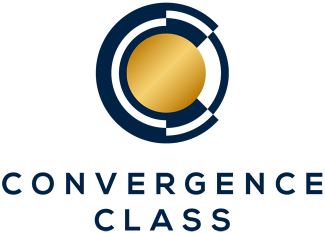
Key Considerations for ABLE Accounts
The Achieving a Better Life Experience (ABLE) Act was enacted to provide individuals with disabilities and their families a way to save and invest money without jeopardizing their eligibility for certain means-tested government benefits. ABLE accounts offer a valuable tool for building financial security and independence. However, before opening an ABLE account, there are key decisions that individuals and their families should consider. In this comprehensive guide, we will explore the essential decisions involved in opening an ABLE account, helping you make informed choices for the financial well-being of your loved one with disabilities.
1. Eligibility and Residency
The first decision to consider is whether the individual is eligible to open an ABLE account. To qualify, the individual must have a disability that meets the Social Security Administration’s definition of disability and have a disability onset before age 26.
Additionally, ABLE accounts are state-based programs, which means individuals must open an account in the state where they reside or in a state that offers nationwide enrollment. Some states restrict ABLE accounts to residents only, while others allow non-residents to enroll. It's important to research the rules and requirements of the specific ABLE program in your state before proceeding.
2. Choosing an ABLE Program
Once eligibility and residency considerations are addressed, the next decision is to choose the ABLE program that best suits your needs. Each state’s ABLE program has its own set of features, fees, investment options, and account management platforms. Here are some factors to consider when evaluating ABLE programs:
- Enrollment and Account Opening Process: Assess the ease of enrollment, application requirements, and the time it takes to open an account. Consider whether the program offers online account access and ongoing customer support.
- Fees and Expenses: Compare the fees associated with each program, including account maintenance fees, investment fees, and any other charges. It's important to understand the potential impact of fees on the growth of the account.
- Investment Options: Evaluate the investment options available within each program. Some programs offer pre-set portfolios, while others provide a self-directed investment approach. Consider the level of investment control and risk tolerance that aligns with your goals.
- Account Management Platform: Review the online account management platform offered by each program. Consider the user interface, tools for tracking expenses, and ease of managing the account.
It's advisable to research multiple ABLE programs and reach out to their representatives to gather detailed information that can help inform your decision.
3. Contribution Limits and Tax Benefits
Contributions to ABLE accounts are subject to annual limits set by the Internal Revenue Service (IRS). The maximum contribution limit can vary by state, but it is generally aligned with the federal gift tax exclusion, which is $15,000 per year as of 2021. Contributions made by the account beneficiary (if employed) are subject to additional limitations.
Another crucial consideration is the potential tax benefits associated with ABLE accounts. While contributions are not deductible from federal income taxes, some states offer state tax deductions or tax credits for ABLE account contributions. Familiarize yourself with the tax laws in your state to understand the potential tax advantages of contributing to an ABLE account.
4. Withdrawal and Qualified Disability Expenses
Withdrawals from ABLE accounts are tax-free when used for Qualified Disability Expenses (QDEs). QDEs refer to various expenses that assist the individual in maintaining their health, independence, and quality of life. Examples of QDEs include education, housing, transportation, healthcare, assistive technology, employment supports, and personal support services.
Before making withdrawals, it is crucial to confirm that the expense qualifies under the IRS guidelines and the state's ABLE program rules. Keep in mind that there are some restrictions on using ABLE account funds for certain expenses, such as payments for food and housing that exceed a certain limit. Understanding these limitations and guidelines will help you make appropriate decisions when using ABLE account funds.
5. Monitoring and Account Management
Once the ABLE account is set up, ongoing monitoring and account management play a vital role in maximizing its benefits. Regularly review your ABLE account statements and track contributions, withdrawals, and investment performance. Keep a record of receipts and documentation for each transaction to ensure compliance with IRS requirements and potential audits.
Additionally, it's essential to stay informed about any changes or updates to ABLE account rules, tax regulations, and state-specific program details. Regularly visiting the official ABLE program website or subscribing to newsletters can help you stay up-to-date with any relevant information.
Conclusion
Opening an ABLE account is a significant step towards achieving financial independence and security for individuals with disabilities. By considering eligibility, researching and selecting the right ABLE program, understanding contribution limits and tax benefits, and staying informed about qualified expenses and account management, you can make well-informed decisions to maximize the benefits of an ABLE account. Remember to consult with financial professionals and disability advocates to ensure that the choices you make align with your specific circumstances and financial goals.
